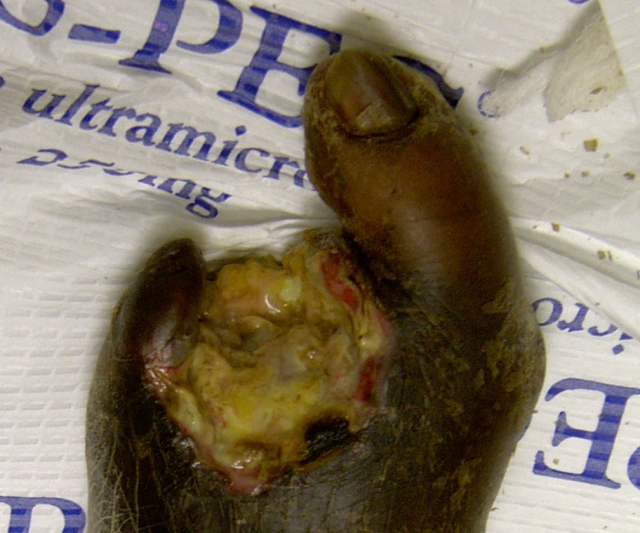Gangrene classification: Difference between revisions
| Line 5: | Line 5: | ||
==Overview== | ==Overview== | ||
There are three main types of gangrene which include wet, dry, and gas gangrene. Sometimes it can be classified according to its site. | There are three main types of [[gangrene]] which include wet, dry, and [[gas gangrene]]. Sometimes it can be classified according to its site. | ||
==Classification== | ==Classification== | ||
Revision as of 05:32, 1 April 2022
|
Gangrene Microchapters |
|
Diagnosis |
|---|
|
Treatment |
|
Case Studies |
|
Gangrene classification On the Web |
|
American Roentgen Ray Society Images of Gangrene classification |
|
Risk calculators and risk factors for Gangrene classification |
Editor-In-Chief: C. Michael Gibson, M.S., M.D. [1]Associate Editor(s)-in-Chief: Edzel Lorraine Co, D.M.D., M.D.
Overview
There are three main types of gangrene which include wet, dry, and gas gangrene. Sometimes it can be classified according to its site.
Classification
Classification Based on Type of Gangrene
Dry Gangrene
Wet Gangrene
-
Diabetic with severe infection and loss of toes - wet gangrene in center.
(Image courtesy of Charlie Goldberg, M.D., UCSD School of Medicine and VA Medical Center, San Diego, CA)
Gas Gangrene
Gas gangrene is a bacterial infection that produces gas within tissues. It is a deadly form of gangrene usually caused by Clostridium perfringens bacteria. Infection spreads rapidly as the gases produced by bacteria expand and infiltrate healthy tissue in the vicinity. Because of its ability to quickly spread to surrounding tissues, gas gangrene should be treated as a medical emergency. Gas gangrene can cause necrosis, gas production, and sepsis. Progression to toxemia and shock is often very rapid.
Classification Based on Site of Gangrene
- Noma is a gangrene of the face.
- Necrotizing fasciitis affects the deeper layers of the skin.
- Fournier gangrene usually affects the male genitals.
